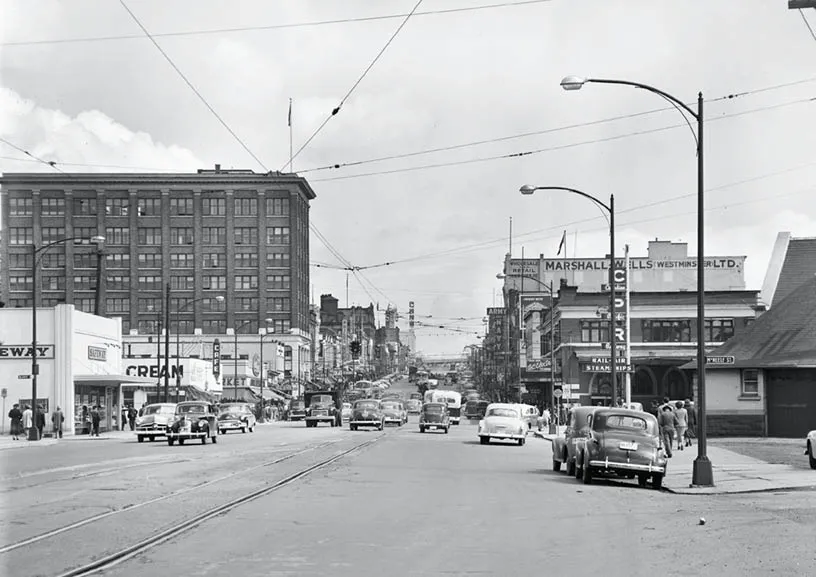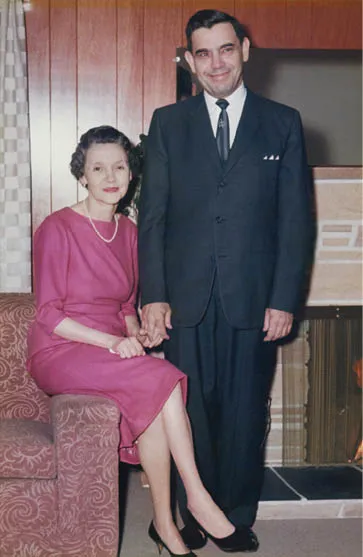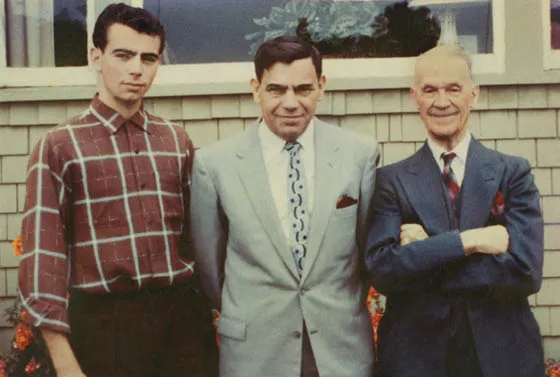![]()
CHAPTER 1
BEGINNINGS
THE CITY OF New Westminster (or New West, as it is known to its citizens) squats on the southeastern flank of the Burrard Peninsula, anchoring the peninsula to the west-flowing Fraser River. Long before European settlers arrived in the area, the Kwantlen First Nation people lived in two communities in the area, Skaiametl and Qayqayt. Skaiametl stood on the Surrey side of the Fraser River; Qayqayt, in the area that would ultimately become New Westminster.
The New Westminster town site was chosen initially for its strategic location. In the early nineteenth century, gold was discovered in the Fraser Canyon. So rich were the gold fields and so widespread the mania about them that local residents worried American miners would attempt to take over the golden spoils. The magnitude of concern about invasion from the south was so great that in 1858 regional governor James Douglas requested aid from the British government. In response, the Royal Engineers, led by Colonel Richard Clement Moody, were dispatched from England to repel the potential raiders. A hundred and fifty-four years later, TELUS would have similar concerns about a potential raider, this time an opportunistic investor. The company wouldn’t have Colonel Moody and his regiment of soldiers; it would have Brian Canfield and his leadership team.
The Colony of British Columbia was proclaimed at Fort Langley in 1858, and in the ensuing months, Colonel Moody, the ranking commander in the area, selected a site to serve as the capital. For a short time, the growing town was called Queensborough, but Queen Victoria herself ordered the name be changed to New Westminster.
The local economy grew rapidly, thanks to both the gold fields and the expanding fishing and timber industries. Miners poured into the region to stake their claims. Few found wealth, but the support industries around them did—hotels, brothels, restaurants, general stores, and dry goods providers were the real beneficiaries. When the colonies of British Columbia and Vancouver Island were united in 1866, New Westminster was declared the capital.
A rapidly expanding agriculture industry attracted newcomers to the Fraser River region, and lumber production became a mainstay. The fisheries were unequalled in production volume. Since the Fraser River provided unlimited hydropower and a way to transport manufactured goods, factories and mills grew up along its banks.
In 1867, with Confederation, the country of Canada came into being. Five years later, the Colony of British Columbia became a province. As part of the Confederation agreement, the federal government extended the Canadian Pacific Railway’s westbound line all the way west, a project that was completed in 1885. The new line allowed industrial goods to be loaded at New Westminster’s port and transported across Canada and beyond. New Westminster’s downtown district along Columbia Street expanded, with new businesses arriving weekly to serve the growing riverside town. In 1898, a fire roared through the central business district, reducing most of it to rubble. Within a few years, however, the downtown had been rebuilt, and once again economic growth gained a foothold.
Industries diversified, and over the next several decades, Columbia Street, nicknamed “the Golden Mile” by local business leaders, boasted a diversity of enterprises, including paper mills, lumber mills, textile manufacturers, shipping companies, and businesses that supported the shrinking mining industry.
View of Columbia Street in the 1950s looking east over Eighth and McNeely Streets. Visible are Westminster block, Safeway, the British Columbia Electric Railway Company building and the Canadian Pacific Railway station.
Like most towns with water access, New Westminster became prosperous, and it generated hundreds of blue-collar jobs for hard-working residents.
One of the men who benefited from this situation was Orra Wells Canfield. He and his wife, Effie, were residents of New Westminster. Effie, born in Chilliwack in 1916, had moved to New West with her mother and siblings upon the death of her father in 1920. Orra was born close by and, when he was old enough, found work in a lumber mill in the Maillardville area of Coquitlam, adjacent to New Westminster. He was a steamfitter, which was a highly desirable position in the days when steam was the principal power source for industry. Orra was also handy, making many of his own tools from pieces of scrounged wood and metal. He passed this skill on to his son, Brian, who was born on July 9, 1938.
A photo of Effie and Orra Canfield, Brian’s parents, taken in 1962.
Brian Canfield was an only child, doted on by his parents. New Westminster was a tight and congenial blue-collar community. People helped each other, especially during the lean years of World War II, and that aspect of the local culture was not lost on young Brian. Nor, it turned out, was the industrial nature of the town, which interested the boy. His innate fascination with mechanics, engineering, and the inner workings of complex industrial machinery made him well suited for a future career in a highly technical industry.
The Canfield family lived on Kelly Street for all of Brian’s childhood. Effie offered piano lessons in their home and served as the church organist every Sunday. She taught Brian to play the piano, and he became good at it; while he doesn’t play often today, he still has his mother’s piano in his home. When the time came for Orra and Effie to retire, they moved to a home on Laurel Street.
As Brian himself recalls, he was a typical rambunctious boy. He and his best friend, Larry Pertch, who lived across the street, explored the extensive bush that surrounded New Westminster, building forts and tree houses, and fishing in Brunette Creek. They played marbles and climbed trees, and in the fall they would gather horse chestnuts to play conkers. Sometimes they would hang around at the Canfield home; Pertch remembers that they had to be on their toes at all times because Brian’s mother was a stickler for etiquette. Most of the time, however, they played outside until they heard the telltale whistle from one of the moms, signalling that it was time to come in and get washed up for supper.
Brian’s paternal grandfather was a school principal in New Westminster who retired in 1938, the year Brian was born. By the time Brian and his friends went through school, his grandfather had become a substitute teacher. He sometimes taught Brian’s classes.
There were five movie theatres in the town of 32,000 people, and Brian and his friends often headed off to watch Tom Mix, Gene Autry, and Wyatt Earp tame the Old West. As they got older they frequented the White Spot, the famous local drive-in complete with carhops on roller skates.
Three generations of Canfields, 1957. From the left, Brian; his father, Orra; and his grandfather, Francis.
Brian attended Lester Pearson High School. There were about three hundred kids in his grade-twelve class, and those who knew Brian remember him as friendly, gracious, respectful, polite, and honest. According to childhood friend Patti Armstrong, Brian was always prepared—a key Boy Scout attribute. On test days, he was awake by 5 am studying and was usually the first person in the classroom—largely because he was ill-prepared, according to Brian. Later, at BC Tel and TELUS, colleagues would make a game out of trying to get to mee...



